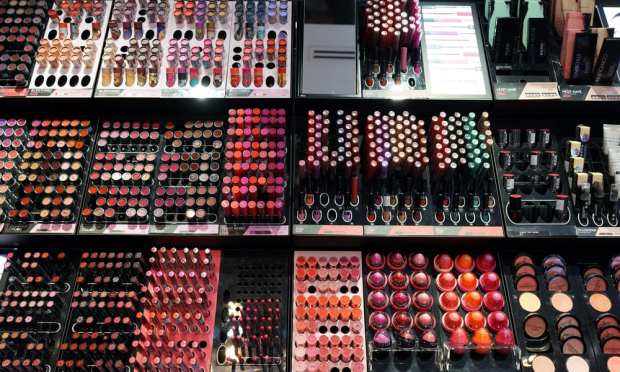Sephora: The Key To Omnichannel Commerce Is Options, Options, Options

Beauty is in the eye of the beholder, which is why today’s brands typically stock or share dizzying arrays of products that appeal to different tastes. Retailers in this space are also beginning to offer more payment methods and shopping channels, and the ongoing COVID-19 pandemic’s effects on consumer behaviors is partly driving this shift.
Consumers’ buying habits have shifted as retailers face new rules and restrictions, with each side adapting to brick-and-mortar store closures or reconfigurations as well as increased online variety and competition. This trend means it is crucial to present multiple options to customers so they can mix and match how they shop and make purchases as they go, Carolyn Bojanowski, senior vice president and general manager of eCommerce for beauty retailer Sephora, said in a recent PYMNTS interview.
Sephora has taken steps in this direction within the past few months, she said. The company partnered with mobile shopping and delivery service Instacart to list its products for home delivery on the latter’s app, launched support for online and in-store payments via buy now, pay later (BNPL) provider Klarna and opened a new reserve online, pickup in-store feature on its website. These offerings are intended to give customers the payment and shopping method variety they crave.
“I think the vision is that it makes the client even more apt to shop omnichannel,” she said. “Pre-COVID-19, [we had] a cohort of clients who were very store-only, another bucket that was very online-only and it was always a goal to help them shop in both of our channels, … so that is definitely the intent. That is the change we would want to see [continue], just more omnichannel shoppers.”
These features enable consumers to create personalized shopping experiences, and offering such variety allows retailers to appeal to new shoppers and retain existing ones as the retail world changes. Providing diverse payment methods is therefore becoming as essential to retailers’ success as offering expansive product lines.
Payment Variety’s Rising Value
Many new or emerging features were in the works before the pandemic, but the global crisis has undoubtedly accelerated their significance and adoption. Sephora had previously examined BNPL, for example, but the company officially rolled out the payment type during a boom in popularity among U.S. consumers in May. BNPL methods have since experienced steady growth in use, with consumers who may be wary of purchasing pricier items, such as luxury beauty products, tapping such options to assuage their financial fears.
“We just found that because we make [BNPL] as easy as using a credit card, it is a really seamless checkout experience,” Bojanowski said. “It is a very low barrier to entry to maybe try Klarna if you have not used it before. We are seeing some nice upticks in categories [in which] maybe a client would have thought twice about making the purchase before … like fragrance. It is really resonating in that category.”
Offering emerging payment tools and enabling consumers to apply them across multiple channels is key to developing a robust omnichannel experience for these shoppers. Customers could use Sephora’s new reserve online, pickup in-store tool, which enables customers to choose their products online before heading to stores to pay for and receive them, to find products and pay using BNPL, for example. They can also use their mobile wallets or traditional credit cards when they get to checkout.
“I think [reserve online] is the best of both worlds,” she said. “[If] the client wants to go in, grab the order and leave, that is OK. And if he or she wants to stay, check things out, talk to a beauty adviser, add onto the order — that can also happen. So it is really about options, just the flexibility to have a completely, purely eCommerce experience or to go into our stores and have that experience as well.”
The company also plans to expand its reserve online tool to allow consumers to buy on its website and pick up their orders in stores, Bojanowski added. Allowing consumers to feel that they are getting “the best of both worlds” no matter how they shop is growing more important, especially as customers seek mobile-based retailer interactions in addition to those made online or in stores.
Omnichannel, Options And Social Media
Social media is also becoming a critical commerce channel for retailers. Younger shoppers, in particular, are interacting with brands more than ever on mobile platforms such as Instagram or TikTok, and giving these consumers tailored shopping experiences through these services could prove to be omnichannel commerce’s new battleground.
“We were the first exclusive beauty retailer to launch in Instagram Shopping,” Bojanowski said. “I think … that partnership has been super exciting for us because we were able to integrate loyalty so a consumer can receive their Beauty Insider points if they shop on Instagram … Instagram is the content creator for beauty, and it is the place where we have a very prominent voice on social [media] … It just made a lot of sense to tie commerce and social [media together] when they were ready to go and launch shopping on that channel. So that’s been super interesting, and it also happened just really recently in June.”
Figuring out how to maintain a robust in-store, online and mobile presence is the current challenge for today’s retailers as they look to engage shoppers who are seeking interconnected, omnichannel experiences — and payments — wherever they go. It is thus crucial for merchants to determine how to give these consumers new shopping and payment options.

